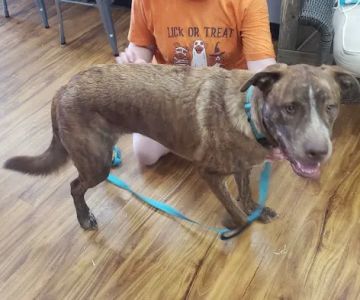Effective Tips for Teaching Your Dog Basic Commands
Teaching your dog basic commands is an essential part of responsible pet ownership. It not only strengthens the bond between you and your dog, but it also ensures safety and good behavior in various situations. In this article, I’ll share some tried-and-tested tips for teaching your dog basic commands. Whether you're a first-time dog owner or an experienced one, these methods will help you get the most out of your training sessions.
1. Start with the Basics: Sit, Stay, and Come
The foundation of good behavior starts with the basic commands like "sit," "stay," and "come." These are the most essential commands that every dog should know. When starting with a new dog, I always begin with "sit" because it's a simple action that most dogs can quickly grasp. Start by holding a treat close to their nose and then moving it upwards, causing their rear end to lower. Once they sit, reward them with the treat and praise. Repeat this until your dog responds reliably to the command.
Once "sit" is mastered, move on to "stay" and "come." For "stay," use a calm voice and hand gesture to show your dog to remain in place. Start with short durations and gradually increase the time. The “come” command is vital for safety, especially if your dog ever escapes or is in danger. Calling your dog to you in a positive tone and rewarding them with treats will make them associate the command with something positive.

1008 W Hazelwood Dr, Urbana, IL 61802, USA
See Details2. Keep Training Sessions Short and Fun
Training should always be a positive experience for your dog. Long sessions can be overwhelming and lead to frustration, both for you and your dog. I recommend keeping training sessions between 10 to 15 minutes. If you notice your dog losing focus or becoming restless, it's a sign to stop and try again later. Incorporating playtime or rewards like treats will make the experience enjoyable for both of you. The goal is to keep your dog engaged and eager to learn without making them feel stressed.
In my experience, some of the most productive training sessions are those that are filled with praise and enthusiasm. Dogs thrive on positive reinforcement, so be sure to give them lots of love and treats when they perform correctly. This positive connection will help them retain the commands better.
3. Use Consistent Verbal Cues and Gestures
Consistency is key when teaching your dog commands. Choose a specific word or phrase for each command and use it consistently. For instance, if you're teaching your dog to "sit," always use the same word "sit" instead of switching between different variations like "sit down" or "sit now." Over time, your dog will learn to associate that particular word with the action.
Additionally, pairing verbal cues with hand gestures can be extremely helpful. Some dogs may find visual cues easier to follow, and using both words and gestures reinforces the message. When teaching "stay," for example, I find that extending my hand forward, like a "stop" gesture, along with the command "stay," works well in conveying the message to the dog.
4. Be Patient and Reward Success
Patience is essential when training a dog, especially when you're teaching new commands. Every dog learns at their own pace, and some may catch on faster than others. When I train my dog, I always remind myself that it takes time. The key is to reward progress, no matter how small it may seem. Positive reinforcement goes a long way in making your dog feel confident about their learning process.
For instance, if your dog successfully sits but doesn't stay in the position long enough, praise them and gradually extend the time. Giving your dog treats after successfully following a command also helps them connect the behavior with a positive outcome. Just remember, it's not about getting everything right immediately—it's about steady progress and consistency.
5. Socialize Your Dog with Different Environments
Once your dog has learned basic commands, it's important to practice them in various environments. This helps your dog generalize the behavior, ensuring they follow commands even when there are distractions. For example, practicing "sit" and "stay" in the backyard is a great start, but practicing in public spaces or busy areas will help your dog stay focused amidst distractions.
While I was teaching my dog to "stay," I took them to the park to practice, and it really made a difference. At first, it was hard for them to focus with so many distractions, but over time, they learned to follow the command even when other dogs or people were nearby. This ability is essential, especially for safety in public spaces.
6. Don’t Forget to Have Fun with Your Dog
Training should be a fun bonding experience, not just a chore. Incorporate games into the process. Use toys or play hide-and-seek with treats, rewarding your dog when they follow the command. These playful moments help your dog enjoy the learning process and keep them motivated. In the end, training is not just about teaching your dog obedience—it's about enhancing your relationship with them.
After all, the bond you share with your dog is just as important as the training itself. Positive interactions, such as playing together or cuddling after a good training session, make your dog excited about learning new commands. It also helps strengthen the trust between you and your dog, making future training easier and more enjoyable.
SEO Title: Expert Tips for Teaching Your Dog Basic Commands SEO Keywords: teaching dog commands, dog training tips, basic dog commands, how to train a dog, positive reinforcement for dogs SEO Description: Discover expert tips for teaching your dog basic commands. Learn effective methods, strategies, and common challenges to ensure a happy and well-trained pet.









